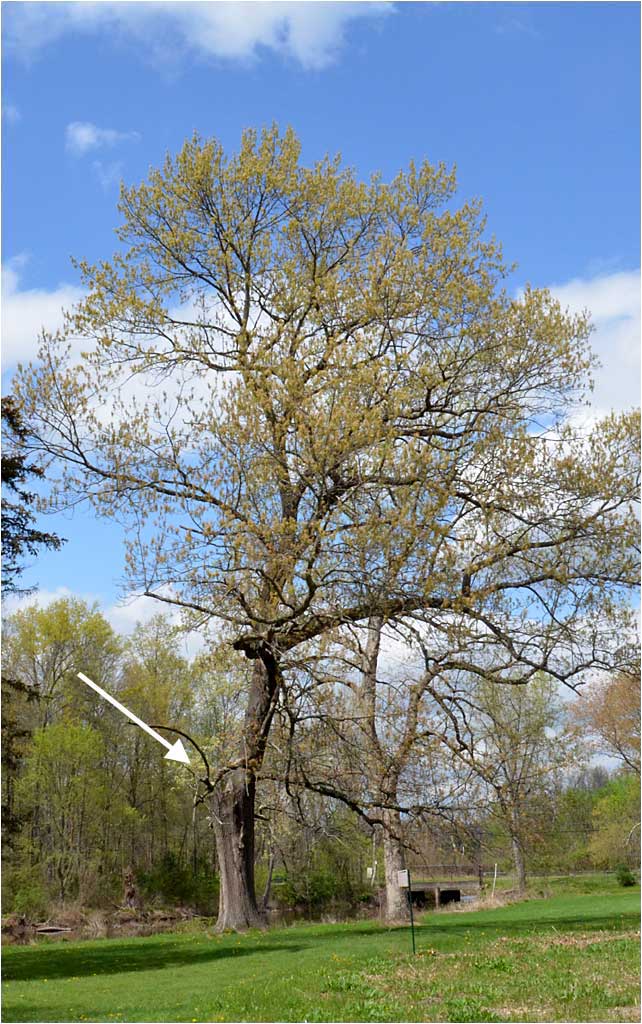55. RED OAK COPPICE, Quercus rubra

On the edge of Westmoor Pond are two wonderful, old (more than a century) Oak trees. One (left) is a Red Oak, and the other (with lingering marcescent leaves) is a White Oak. Not only are they their species name, but are also the names of the two main families of Oaks. Oaks in the Red Oak family have different wood, leaves with points, bark, and grow faster. Trees in the White Oak family have smooth lobes on their leaves, often keep some leaves over the winter (marcescence), and their wood is suited to many applications (barrels, exterior use) where Red Oak would not be appropriate.
Several years ago, a violent wind storm sheared the left leader off of the Red Oak. The remaining 75% of the tree appeared healthy and sound, and continued to flourish...
RED OAK, SIDE VIEW

Seen in this side view, you may visualize just how much of this tree was lost. Probably 25% of its canopy, but the lost leader and branches were all on one side of this old tree. Because the lost canopy was low on one side of the tree, the tree was not longer "balanced" as it had been for more than a century.
TRAGEDY

Those concerns over the tree's balance and viability were confirmed during an epic rain inundation in the summer of 2023. The weight of the water on the tree caused a massive split some 14 feet from ground level. When the tree is removed we will be able to determine whether the original wind storm caused the imbalance, or whether the first break created an opportunity for rot to fester in this very important, structural part of the tree. This Red Oak had a DBH (Diameter-at-Breast-Height) of 46 inches - making it one of the older trees in the arboretum. But perhaps there is hope...
THE COPPICE PROJECT, 2024
Rather than just give up on this magnificent old tree, there is strong interest in seeing whether the tree could continue to live as a "coppiced" tree. Coppicing is an ancient method of forestry where trees were cut very close to ground in order for them to grow "sprouts". The sprouts shoot up rapidly (growing 3-4 times faster than the tree did) and were then recut every 10, 15, or more years depending on the use of the wood (The Yew tree yielded English Long Bows this way, although the coppice cycle very long - 80 years or so).
In late winter of 2024, Westmoor Park will attempt to "coppice" this Red Oak. It may take a few years to find our whether the project is successful or not.
To learn more about the ancient practices of coppicing and pollarding (same idea, just further off the ground to discourage wildlife from foraging on the tender sprouts) please read Bill Logan's superb book: Sprout Lands, Tending the Endless Gift of Trees.